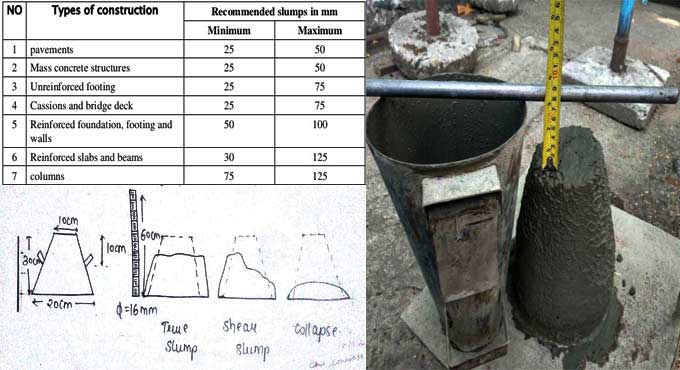
How you test Slump Sealants Effectively like a Pro

Slump is a test for concrete that hasn't yet cured. It can happen with concrete with a low slump that is quite stiff or concrete with a higher slump is more fluid. Concrete is commonly referred to as Slump when it comes to its consistency or flow ability.
Determination of Proper Slump
Decorative concrete uses a different slump for different applications even if it is limited to just decorative concrete. If you order concrete from a ready-mix plant, you will have to tell them how flow-able or stiff you would like the concrete to be. A number is assigned to the concrete quantity.
Standard Test Method for Sealants Slump
The purpose of this test method is to determine the degree of slump of a sealant in a vertical joint of a structure by performing a laboratory test. ISO 7390 is a related standard. You should compare it with this test method to see how it differs.
As separate standards, inch-pound values and SI values should be regarded. An inch-pound unit is displayed in parentheses in the text.
If there is any safety concerns related to its use, this standard does not seek to address them all. Prior to utilizing this standard, it is the user's responsibility to establish appropriate safety, health, and environmental practices, as well as determine whether regulatory limitations apply.
Why you need Slump Test?
In a vertical joint, excessive sag or slump may result in an improper bead shape or inadequate sealant thickness.
The purpose of slump measurements, according to this test method, is to evaluate only this application characteristic. Nevertheless, they cannot predict how the sealant will perform after installation.
Apparatus
1. Flow Test Jig.
2. Gravity Convection Oven having a temperature-controlled at 50 plus minus 2 degrees centigrade.
3. Steel Spatula.
4. Plastic scraper, plastic tile.
Reagent
Solvent- you can use solvent such as methyl ethyl ketone in this test.
Temperature
At least five hours at 23 degrees plus or minus two degrees are required, both for the test jig and the sealant.
Test Procedure
1. A test jig is cleaned thoroughly with the solvent, placed on a level table with the front facing upward, and the plunger is depressed until it reaches its limit.
2. In the jig cavity, mixed, conditioned sealant is placed, and the sealant is leveled flush with the surface of the block.
3. The plastic scraper must be gently raised at an angle of 45? to accomplish this. This sealant avoids the formation of air pockets, especially in the areas near the plunger.
4. Plastic scraper and cloth are used to clean the cavity; the jig is placed on top of it immediately and gently moved to one-half of its maximum travel, or 4.75 mm.
5. A solid cylinder of caulking or sealant, 38.1 mm in diameter and 4.75 mm thick, is left ready to flow down the face of the instrument.
6. After placing the jig into the oven, it is maintained at 50 degrees plus or minus 2 degrees for 30 minutes while being careful not to move the oven during this time.
7. Take a reading at the end of the 30 minute period to the nearest 0.2 mm of the compound's maximum flow point.
8. The jig needs to be cleaned and reconditioned as described above.
9. The previous points should be repeated with another sealant specimen.
Test Report
Slump readings are recorded for each specimen in both tests, along with an average value.
Test Results
Two separate inter laboratory tests provide precision statements for this test method. Two oil-based sealants were tested in triplicate by five laboratories. On the other hand, four independent laboratories investigated four solvent-release sealants, each tested in duplicate.
To learn more, watch the following video tutorial.
Video Source: Civil Site visit
Reproducibility
In 95% of cases, the difference between test results obtained by different operators in different laboratories over the same material could be as much as 1.93 mm.
Repeat Occurrence
With 95% confidence, a variation of up to 1.07 mm may occur between two test results obtained on the same material by the same operator.


